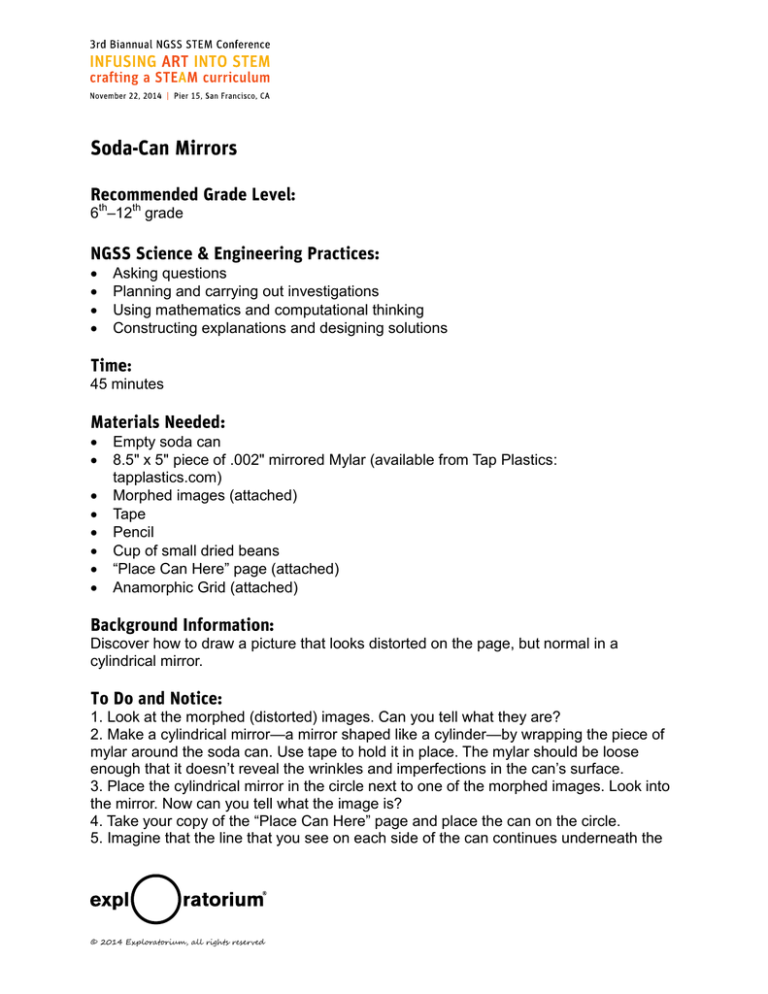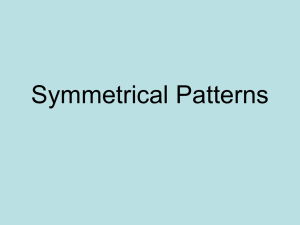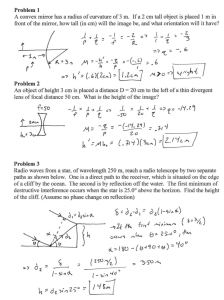
6th–12th grade
Asking questions
Planning and carrying out investigations
Using mathematics and computational thinking
Constructing explanations and designing solutions
45 minutes
Empty soda can
8.5" x 5" piece of .002" mirrored Mylar (available from Tap Plastics:
tapplastics.com)
Morphed images (attached)
Tape
Pencil
Cup of small dried beans
“Place Can Here” page (attached)
Anamorphic Grid (attached)
Discover how to draw a picture that looks distorted on the page, but normal in a
cylindrical mirror.
1. Look at the morphed (distorted) images. Can you tell what they are?
2. Make a cylindrical mirror—a mirror shaped like a cylinder—by wrapping the piece of
mylar around the soda can. Use tape to hold it in place. The mylar should be loose
enough that it doesn’t reveal the wrinkles and imperfections in the can’s surface.
3. Place the cylindrical mirror in the circle next to one of the morphed images. Look into
the mirror. Now can you tell what the image is?
4. Take your copy of the “Place Can Here” page and place the can on the circle.
5. Imagine that the line that you see on each side of the can continues underneath the
© 2014 Exploratorium, all rights reserved
can, and forms the diameter of the cylinder. (Shown as “––––- - - - - - - - –––––” in the
drawing.)
6. How can you use beans to make this straight-line diameter in the reflection? Place
one bean in front of the can so you can see it in the mirror. Keeping your eye on the
reflection of the bean, move the bean so its reflection
lines up with the imaginary extension of the diameter line.
7. Keep adding beans, one at a time, to create a straight
line in the mirror that connects the lines on either side of
the can. The key is to keep looking in the mirror as you
position each bean.
8. Once the reflection looks like a straight line of beans,
notice the shape formed by the actual beans on the
paper. How would you describe that shape?
9. Now take a look at the Anamorphic Grid—some of
those lines should look like your bean line. How do you
think the reflection will look when you place the mirror on
the circle?
10. Place the can in the circle on the grid and see what happens to the curved
lines.
11. Remove the can, and draw a simple design on the square grid inside the circle. You
might choose to draw the first letter of your name, or some other simple design. Use
your pencil to fill in inside of your design.
12. Let’s change your design into anamorphic
art! Draw a reflection of your design in the
curved grid. Do this by copying the shading in
each square to the corresponding “square” on
the curved grid. Here’s an example with a
letter L:
Copy one square of your shape at a time.
Make sure to count how many empty squares
are between your original shape and the
circle, and then start drawing the edge of your
shape the same number of squares away
outside of the circle.
Keep counting and drawing in squares as you map the complete reflection of your
design onto the curved grid. When you’re finished, check your design by placing your
mirror back on the circle.
© 2014 Exploratorium, all rights reserved
Flat mirrors make normal reflections of whatever you put in front of them. A cylindrical
mirror, like the one you made, still obeys the laws of reflection, but its curvature creates
a squished or compressed image of the things around it. If you draw a normal shape, it
will look squished in the mirror. But if you draw a horizontally stretched-out shape in
front of the mirror, the reflection will squish into a normal-looking shape. This kind of
transformation of one shape into another shape is called anamorphosis, which literally
means re-shaping.
This activity was first developed for the Exploratorium exhibition Geometry Playground.
© 2014 Exploratorium, all rights reserved
© 2014 Exploratorium, all rights reserved
© 2014 Exploratorium, all rights reserved
© 2014 Exploratorium, all rights reserved
© 2014 Exploratorium, all rights reserved
6th–12th grade
Asking questions
Planning and carrying out investigations
Using mathematics and computational thinking
Constructing explanations and designing solutions
25 min
mirrored mylar
cone template (attached)
cardstock
glue stick
tape
scissors
colored paper
When you look downwards at the tip of a conical mirror, it reflects everything around it
towards the center of the cone.
1. Print the cone template onto cardstock or other stiff paper.
2. Glue enough mylar to the back of the template to cover the area of the circle.
3. Cut along the solid lines to get two semicircles (give the other to a friend).
4. Curve the mirror so that the mylar is on the outside and tape the inner edge to the dotted line on
the template.
5. Place a 10 cm x 10 cm square sheet of colored paper on a larger piece of a different color
paper.
6. Put your mirror in the center and place your eye above the tip of the cone. What do you see?
© 2014 Exploratorium, all rights reserved
Conical mirrors provide an interesting reflecting surface for anamorphic images. The images are
best viewed with the eye looking downwards from a fixed point above the apex of the cone. Just
as in planar mirrors, light from the image hits the mirror and is reflected into your eye. The angle
between light from the image and the surface of the mirror is the same as the angle of the light
that is reflected into your eye. Light is bouncing in all directions, but you only see what is perfectly
reflected into your eye. In a conical mirror, the angle can be measured by imagining a tangent
plane at each point in the cone. This infinite set of infinitely small planar mirrors reflects the
images back to your eye in straight lines. This simple geometry can be used to predict how
images will look to you when you view them in the mirror.
your eye
Light hitting point A in the image is reflected
off of the mirror at point B into your eye.
You see whatever is at point A at point B as
well. The two angles made by the reflected
light rays are identical.
B
A
The template is designed to generate a cone with a height of 7.5 cm and base diameter of 7.5 cm.
A cone of this size will not reflect anything greater than a regular sheet of paper. What are the
bounds to the space that you can see?
Use the grid template to draw your own conical anamorph!
© 2014 Exploratorium, all rights reserved
© 2014 Exploratorium, all rights reserved




